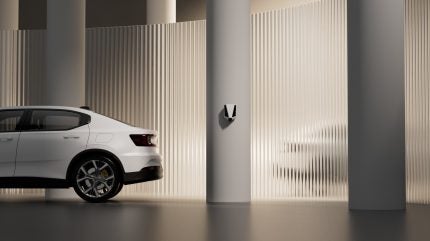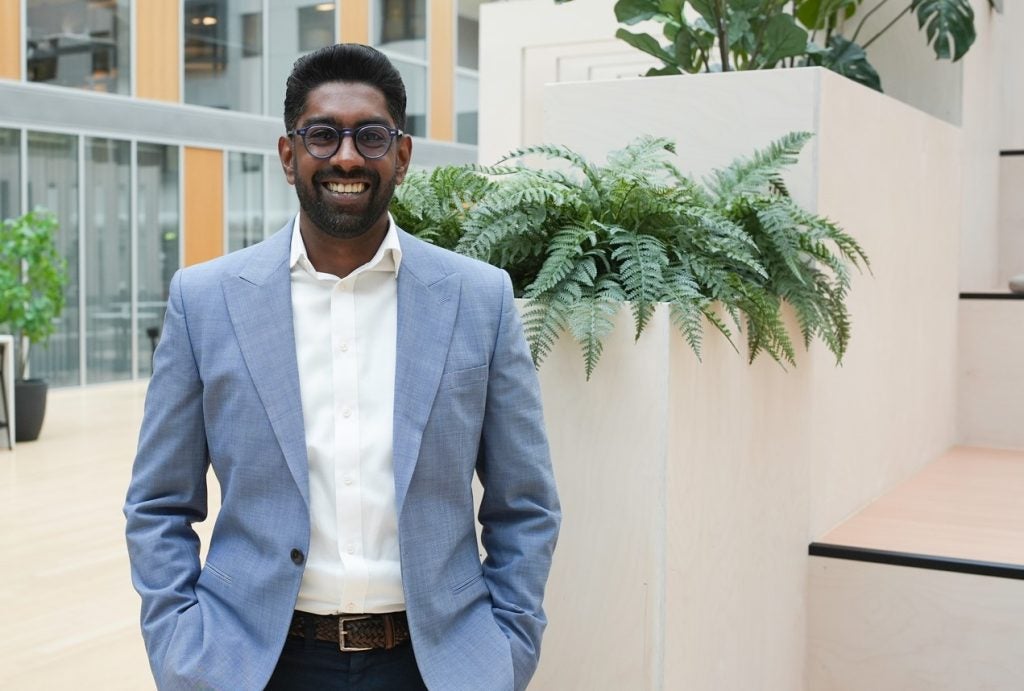
Grid pressure and capacity constraints are a common topic of discussion for those within the electrification industry, EV owners and OEMs.

Discover B2B Marketing That Performs
Combine business intelligence and editorial excellence to reach engaged professionals across 36 leading media platforms.
Pressure on the grid is driven by several factors including a rapid influx to the parc of new electrified vehicles, increasing demand and surging renewable energy generation. Charging infrastructure is often seen as a bottleneck, but EV charging solutions provider, Easee, doesn’t see it this way.
With 850,000+ connected wall box chargers across Europe, Easee says it has the foundation of a virtual infrastructure that it says can intelligently balance demand, shift loads, and relieve stress on power grids at pinch points.
The platform enables scalable, intelligent charging across homes, workplaces, and commercial sites. It also provides the ability for integration with renewable energy providers, energy storage, and software providers, and will reduce operational costs.
Easee’s vision is for an EV charger to act as a smart electricity valve for a premium product at a competitive price, where all the end-user has to think about is the colour of the unit.
We spoke to Anthony Fernandez, Easee CEO, to learn more about Easee’s solution and to discuss the future for the EV landscape.

Just Auto (JA): Who is Easee?
Anthony Fernandez (AF): Easee was founded in 2018 in Norway, we are now one of the largest, if not the largest, supplier of smart HD charging hardware.
We have an install base of nearly a million chargers across Europe, and we have really focused right from the start on three things. One is having excellent design. The second is having an easy-to-use platform. And the third is having one of the most reliable chargers on the on the market.
We’re not buying subsystems and re-branding chargers. It’s really been engineered from the ground up, and that’s how we keep control of our costs. It’s also how we keep control of our quality, and keep control of the performance.
We have teams in Norway, Amsterdam, Munich, London and Glasgow. That’s where the majority of our workforce are. We work with all types of different use-cases for AC charging, not just in the residential space, but also in the semi-public and commercial space as well. Going forward we are moving from being a pure hardware, or a pure product company into being a platform company that really helps drive and facilitate the energy transition.
We call that effortless electrification, because we really believe that anyone that’s going to take part in this industry, and take part in all of the opportunities that we have in an electric future, it needs to be effortless.
They can’t have five, six different apps, and switch utility companies every three weeks. The whole idea is to almost make it invisible to the end user, not just the end user, also the installer; their life needs to be easy. That’s been a key part of our philosophy from day one; if we make the installers’ life easier, we get more chargers installed, more reliable installations, and the customers are happier.
Could you discuss the company’s ‘Vision 27’ strategy?
Easee’s “Vision ’27” is a strategic plan to transform the company from a hardware manufacturer to a comprehensive digital platform for electrification by 2027. The strategy focuses on creating a more seamless and integrated EV charging experience by enabling smart charging, integrating renewable energy sources, and fostering industry collaborations.
The purpose behind this is effortless electrification. We really want the world to move towards renewable energy sources. It’s about making this accessible, not just for early adopters, but also for that mass-market which maybe doesn’t care that much about EV charging, or EVs.
What they want is the most cost-effective way, the most reliable way of getting from A to B, and let’s hope that that’s going to be EVs, and let’s make sure that we are behind the scenes making that happen.
The purpose behind this is effortless electrification. We really want the world to move towards renewable energy sources.
There’s a lot of information in the media these days about governments pulling back on their commitments for Net Zero, but the rate of EV adoption is still increasing. People are still buying EVs in greater numbers.
We’re now seeing second-hand EVs come onto the market as well. I don’t think this trade is slowing down just because governments might change course from time to time. The underlying market is still going to grow. We are still all working towards a future of electrification. Easee’s ambition is just to make that transition as seamless, and easy as possible for everyone.
How are you helping the end-users?
AF: In the early adopter phase, it was up to the end-user to choose their charging solution, and they had to do the research, similar to how they bought their EV. I think where we are going in the future, is that the installers (the one that’s recommending the charger), or the energy company, is who is recommending the charging solution here. We’re already moving to a world where the end-user doesn’t need to make decisions. What they need to know is that the charger is going to be reliable, that it’s not going to break, and that the installation itself is not going to be a pain.
We’re trying to take all the complexity involved and deal with that complexity ourselves, so the end-user, or the installer, doesn’t have to, and that means that there’s a lot of work behind the scenes in terms of the cloud infrastructure that we have that keeps our chargers alive and connected.
We are receiving 200 plus data points from the chargers to make sure that we have one of the most reliable asset bases in the world for this type of charger. We have over 99% uptime, and that’s because of the software architecture and infrastructure that we have behind the scenes that allows us to deal with most issues remotely, without the end-user even knowing about it.
That’s what scares people as well, from an end-user perspective. If they want their car to be charged in the morning before they go to work, if it’s not, then that’s a massive negative and affects their perception of the reliability of EV charging. We want to take all of that complexity out, and all of that worry away from the end-user.
What else needs to happen to achieve a sustainable charging network and where does responsibility lay?
I see it more as an industry challenge, rather than a market challenge or a geopolitical challenge. The reason I say industry challenges is because it’s still quite a young industry and everything is evolving quite rapidly.
I don’t think there are any firm fixed business models in this industry, yet – companies are still evolving. They’re still deciding where they sit in the value chain, how they play in the overall ecosystem. For Easee, we want to be a partner of choice, and work with the best in the industry to solve these problems, and build sustainable business models for ourselves, so that we’re actually going to share in the profit, and the value that we generate over time, whether it’s from grid stability, distribution flexibility, all these types of areas.
I don’t think there are any firm fixed business models in this industry, yet – companies are still evolving.
It shouldn’t be just one party in the ecosystem to cover everything, and rather than competing against each other it’s my view that we really need to work with each other and collaborate in a more effective way. We’ve got all the building blocks. The geopolitical changes will always happen, the market trends will always happen, we can’t really control that.
So we need to make sure that the end-user gets a complete-as-possible solution without having to really think about it too much.
What do you see the next five or so years holding for EVs and the charging network?
By that point the majority of cars should be EVs. I really hope that that is the case. We’ve proven we can do it in some countries within Europe. With the right incentives and the right industry structure there is no reason why we can’t achieve this in other countries.
I think from Easee’s perspective, in that environment, we want to be number one. We want to have the platform of choice across end-users, installers, energy companies, charge point operators. We want to be the company of choice there, and I think we can do it. We’re confident that we have such a strong starting position compared to many of our peers.
We’ve got fantastic partnerships with OEMs, with energy companies, with other players in the ecosystem.






